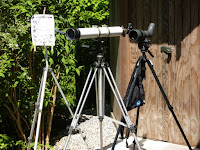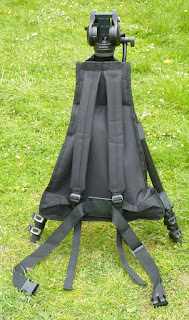~~~
Elderly people have smaller pupils so greater aperture is a mixed blessing during daylight hours. The light passing through the telescope will also affect your pupil size.
So, is the huge eye lens of the Vortex simply a styling fetish to trap the unwary buyer? It seems that large eye lenses are more forgiving of poor eye alignment with the eyepiece. It avoids dark patches in the image [due to eye misalignment] and allows a larger field of view. So nothing to criticize there. Some "high end" binoculars have 24mm eye lenses.
How useful is that relatively large, 85mm aperture, to anybody but the very young 'scoping at dusk?
Aperture/Magnification = telescope exit pupil.
85/27x = 3mm, 85/40x = 2mm, 85/50x = 1.7mm, 85/60x = 1.4mm.
That looks fine. At the lowest power of 27x the telescope matches an average daylight human pupil. So the full aperture is still utilized.
The elderly buying 7x50 binoculars are wasting their time and money. Their pupil will never match the 7mm exit pupil even in the pitch black of a cave! 10x40 makes far more sense. Though some prefer 8x40 for the lower power simply to avoid the risk of shaky hands. Bino clamps are available to allow the binocular to be tripod or or monopod mounted for stability.
It is quite shocking how stabilizing a binocular will increase the detail which is visible. The detail is always there, but denied by one's inability to hold the binocular or telescope [image] perfectly still.
Try using a post or field gate for greater stability if one is nearby. The more distant a subject the steadier the binocular needs to be. The magnification acts like a huge optical lever. The longer the lever, the more the subject moves to the slightest shake of the hands!
Only at night, while looking at a dark sky with dim objects, will one need a larger exit pupil. Providing one is young enough to use it. The moon is bright though a telescope so the human eye pupil will not expand just because the sky is dark.
A wide angle eyepiece helps to give the impression that you are immersed in the view. Binoculars even more so. Smaller fields of view are more like looking at the view through a narrow tube.
~~









































